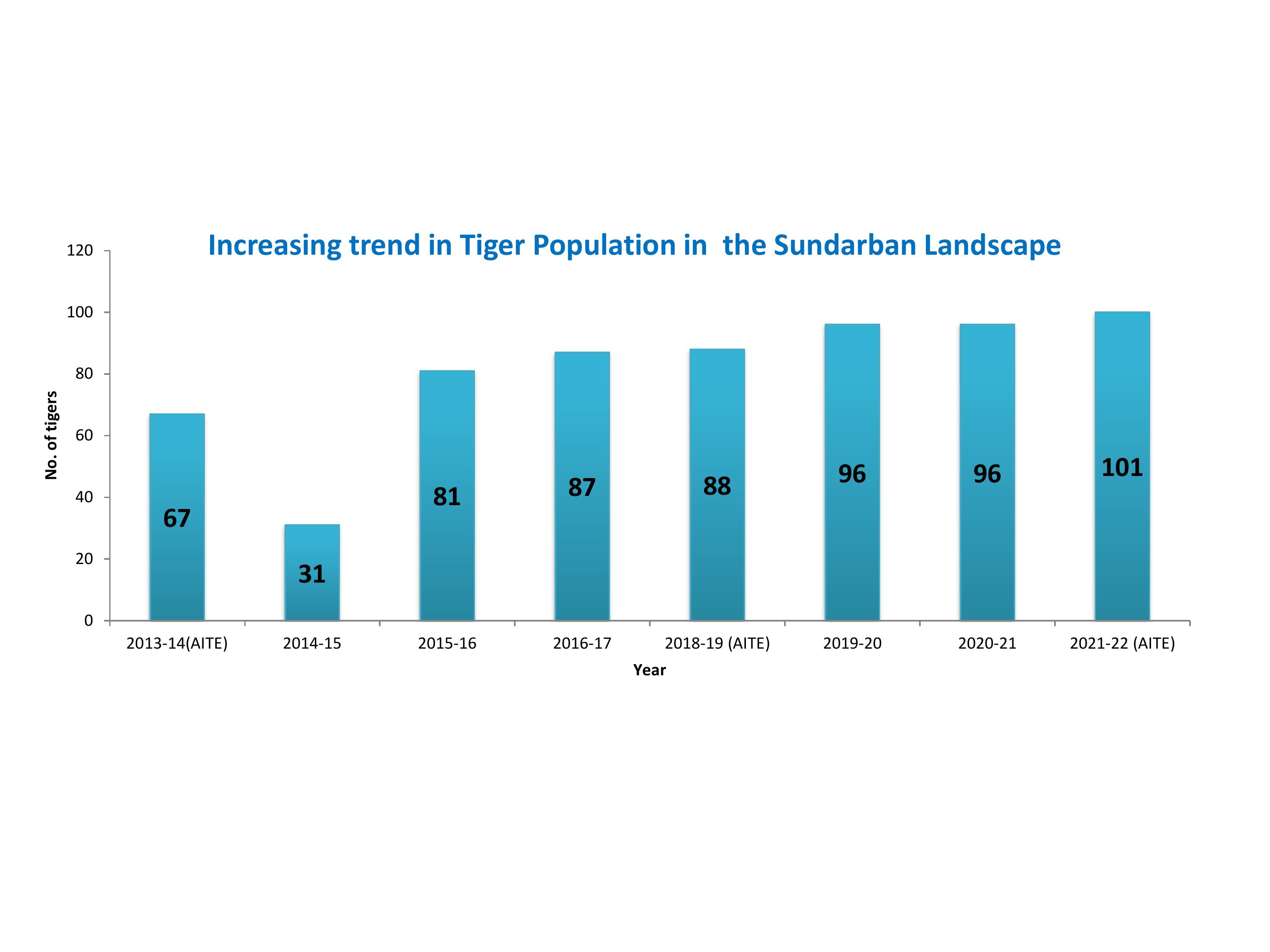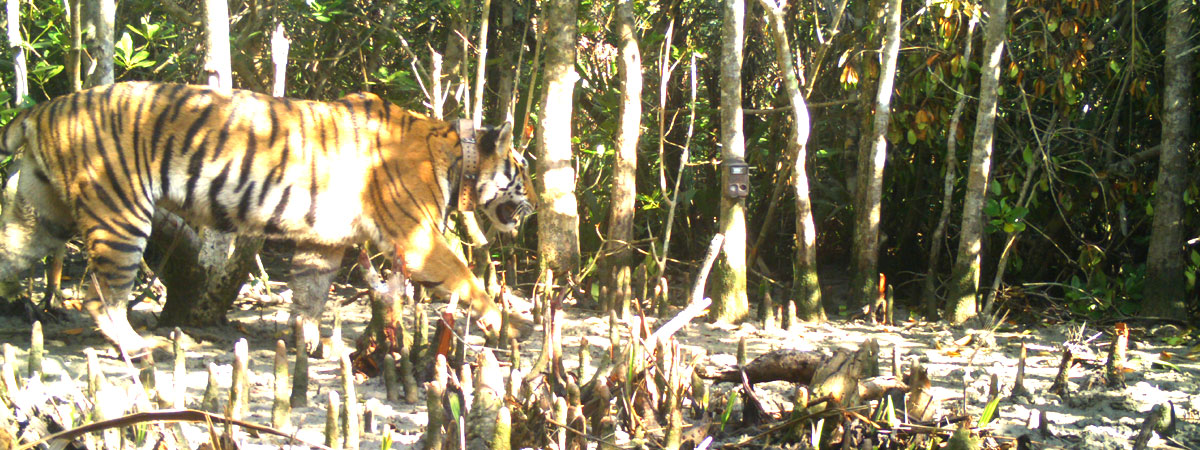

| Ecological | Economic |
|---|---|
| More than 80% of the world's wild tigers are present in India. | Promotion of Eco-tourism, |
| Tigers are at the top of the food chain in terrestrial ecosystem. | Local people engagement in associated hotels and home stays, |
| Sometimes referred to as 'umbrella species', their conservation also conserves many other species in the same area. | Engagement of local people in safari boats, |
| Ecosystem quality is maintained as no anthropogenic disturbances inside the forest areas, | Boat/ferry service for local sight seen, |
| Storage of carbon stock of the Mangals, | Local people involvement as eco-tourism guides, |
| Water source management and other ecosystem services. | Local handicrafts promotion by souvenir shops, |
| Selling of local food items to the tourists and so on. |
All India Tiger Estimation process was carried out by the intense observation and monitoring by NTCA (National Tiger Conservation Authority) and the State Forest Departments.
As per the guidelines of the NTCA, the state level tiger estimation is carried out in the entire Sundarban landscape. This is known as Phase IV of tiger estimation. Camera trapping method is the only way of knowing the tiger population in this terrain.
The Tiger estimation exercise that includes habitat assessment and prey estimation reflects the success or failure of Tiger conservation efforts.
Smart technologies are regularly used from the AITE (All India Tiger Estimation) 2018 to till date.
Note: The analysis of the flanks and the identification procedure of tigers are assisted by the WII-Dehradun.
| Year | Tiger Abundance (Range) |
|---|---|
| 2010 | 74 (SE 16) |
| 2014 | 76 (SE 20) |
| 2018 | 88 (SE 2) |
| 2022 | 101 (SE 10) |
The detection corrected sex ratio was 2 females per male.
Sampling protocol of Sundarban and mangrove landscape differs from peninsular India. To estimate herbivores and prey species, boat transect were done during low tides, and khal (water channel) surveys were done for occupancy of tigers and other species. For the very first time the entire landscape was sampled using android based Polygon Search application of M-STrIPES.




